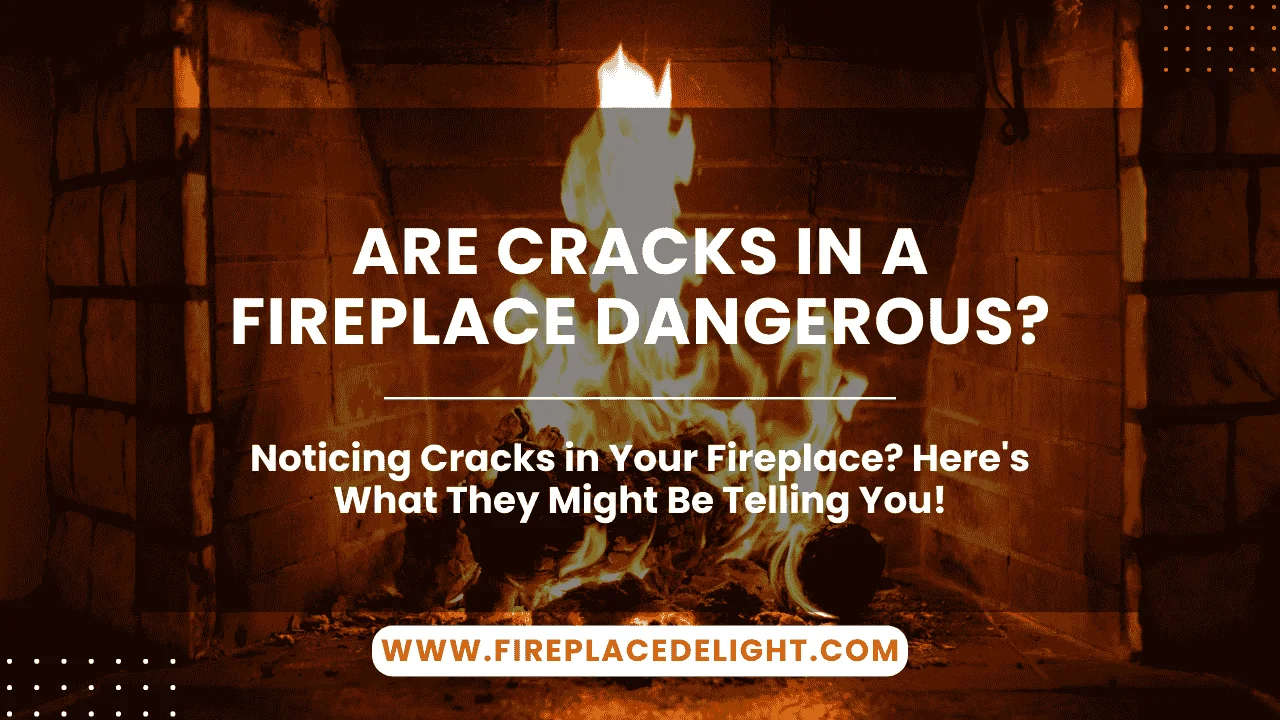Cracks in a fireplace may not seem alarming at first, but they can pose serious safety hazards if left unaddressed. Over time, exposure to high temperatures, moisture, and natural settling can cause cracks in the firebox, chimney, or masonry. These cracks may lead to dangerous situations such as fire hazards, structural instability, or carbon monoxide leaks. Understanding the risks and knowing how to identify and repair cracks is essential for maintaining a safe and functional fireplace. In this guide, we’ll explore the causes of fireplace cracks, their potential dangers, and how to fix them before they become a serious problem.
What Causes Cracks in a Fireplace?
Fireplace cracks can develop due to a variety of reasons. One of the most common causes is thermal expansion and contraction. As the fireplace heats up and cools down repeatedly, the materials expand and contract, leading to small cracks over time. Moisture infiltration is another major factor, as water can weaken masonry and cause structural damage. Poor construction or aging materials also contribute to cracking, especially in older homes. Additionally, natural settling or seismic activity can cause shifts in the structure, leading to cracks in both the firebox and chimney.
Types of Fireplace Cracks and Their Risks
Surface Cracks in Firebrick or Mortar
Hairline cracks in the firebrick or mortar joints are common due to repeated heating. While they may not be immediately dangerous, they can allow excessive heat to escape, weakening the structure over time. If left unsealed, these cracks can grow and lead to more severe issues.
Deep Cracks in the Firebox
Cracks that penetrate deep into the firebox can be hazardous. If they reach the combustible materials behind the fireplace, they create a direct fire hazard. Heat escaping through these cracks can ignite surrounding wood, insulation, or drywall, increasing the risk of a house fire.
Cracks in the Chimney Liner
The chimney liner plays a crucial role in directing smoke and gases safely out of the home. Cracks in the liner can lead to improper ventilation, allowing dangerous gases like carbon monoxide to seep into living spaces. Additionally, gaps in the liner can enable creosote buildup, increasing the risk of a chimney fire.
Cracks in the Masonry or Exterior Structure
Cracks in the chimney’s exterior can let in moisture, which weakens the structure over time. Water damage can cause bricks to deteriorate, leading to crumbling or even a chimney collapse. If you notice bricks shifting or mortar breaking away, it’s important to take action to prevent further damage.
Read More: Cleaning a Marble Fireplace
How to Identify Dangerous Fireplace Cracks?
Regular fireplace inspections can help detect cracks before they become serious. Small surface cracks may not be a cause for immediate concern, but deeper or spreading cracks indicate potential hazards. Checking for loose or crumbling mortar, soot buildup near cracks, or discoloration can help identify problem areas. If there’s any uncertainty about the severity of the cracks, hiring a professional chimney inspection is the best way to ensure safety.
How to Fix Fireplace Cracks Safely?
Repairing Minor Surface Cracks
For small cracks in firebrick or mortar, using refractory mortar or fire-resistant sealant can help prevent further damage. Repointing mortar joints can also reinforce stability and reduce the risk of heat escaping.
Patching Deep Firebox Cracks
For deep cracks in the firebox, replacing damaged firebricks is often the safest solution. Applying a heat-resistant patching compound can temporarily seal cracks, but professional repairs may be necessary for more extensive damage.
Addressing Chimney Liner Cracks
If the chimney liner is cracked, installing a new liner is the most effective solution. Stainless steel liners are a durable and long-lasting option that improves both safety and efficiency. Without a proper liner, smoke and gases may not vent properly, posing serious risks to the home.
Fixing Structural Masonry Cracks
For exterior masonry cracks, sealing small gaps with a waterproof sealant can prevent moisture damage. However, if cracks continue to grow, a professional mason may need to rebuild sections of the chimney to maintain structural integrity.
When to Call a Professional?
While minor cracks can sometimes be repaired with DIY methods, larger cracks or structural damage require professional attention. If cracks are spreading, the chimney liner is compromised, or there are signs of smoke leakage, calling a certified chimney professional is crucial. Annual chimney inspections can help catch issues early, ensuring your fireplace remains safe and efficient.
Conclusion
Cracks in a fireplace should never be ignored, as they can lead to serious safety risks. Identifying the type and severity of cracks is key to determining the appropriate repairs. Whether sealing minor cracks or seeking professional help for major damage, addressing these issues promptly ensures your fireplace remains a safe and reliable heat source. Regular maintenance and inspections are essential for preventing costly repairs and keeping your home protected.
- Can You Install an Electric Fireplace Anywhere? - July 31, 2025
- 23 White Fireplace Ideas to Brighten Your Home - July 31, 2025
- How to Clean an Electric Fireplace TV Stand? - July 30, 2025



